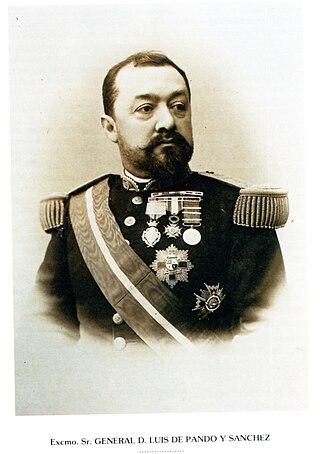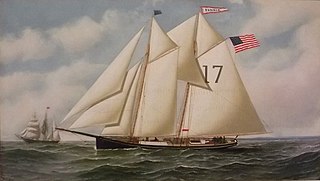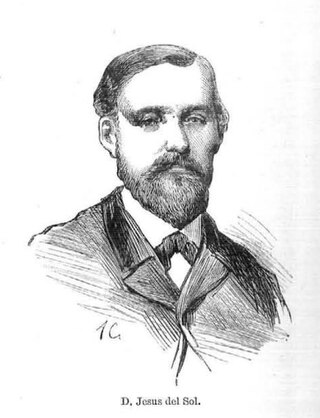
The Battle of Tayacoba, June 30, 1898, was an American special operations effort to land supplies and reinforcements to Cuban rebels fighting for their independence in the Spanish–American War.
A filibuster, also known as a freebooter, is someone who engages in an unauthorized military expedition into a foreign country or territory to foster or support a political revolution or secession. The term is usually applied to United States citizens who incited insurrections across Latin America, particularly in the mid-19th century, usually with the goal of establishing an American-loyal regime that could later be annexed into, or serve the interests of, the United States. Probably the most notable example is the Filibuster War initiated by William Walker in Nicaragua in the 1850s.

Frank País Airport is an airport serving Holguín, a city in the Cuban province of Holguín. It bears the name of Cuban revolutionary Frank País. The airport was built in 1962 initially only for military purposes before civilian air operations began in 1966. It consists of a domestic and an international terminal, which was built in 1996 and expanded in 2007.

Major-General Joseph Robert Davis was an American politician and lawyer who served as the commanding general of the Mississippi National Guard from 1888 to 1895. During the American Civil War, he served as aide-de-camp to the President of the Confederate States and commanded a brigade in the Army of Northern Virginia. He is best known for his role at Gettysburg. A member of the Democratic Party, he represented Madison and Scott counties in the Mississippi Senate from 1860 to 1861.

Calixto García is a municipality in eastern Cuba, in the province of Holguín. It has a population of 53,722 inhabitants. Its activities are centered around agriculture and cattle farming focused on beef production. Buenaventura is the capital of the Calixto García Municipality. The municipality was named for Calixto García Iñiguez, a hero of the War of Independence.
Bartolomé Félix Morales y Ramírez was a lieutenant colonel of the Spanish infantry who served as lieutenant governor in Holguín, Cuba, and briefly as an interim governor of East Florida. As commandant of the third battalion of Cuba, he was appointed to posts in the Cuban cities of Bayamo, Cobre and Holguín, and commanded the Spanish garrison in St. Augustine, Florida.

Lieutenant-General Luis Manuel de Pando y Sánchez was a Spanish general during the Spanish–American War, a Civil Governor of the Province of Santiago, Cuba. He was nominated for the Cross of San Fernando, promoted to the rank of Colonel of the Army of the field of battle by His Majesty King Alfonso XII, and the youngest General in the Spanish Army.
The following is a timeline of the history of the city of Holguín, Cuba.

The Fannie was a 19th-century Sandy Hook pilot boat built in 1860 by Edward F. Williams at his shipyard in Greenpoint, Brooklyn for New York City pilots. She was in the pilot service during the American Civil War. In an age of steam, she was sold in 1896.

Perfecto Lacoste was the first Mayor of Havana elected under American occupation and later Secretary of Agriculture of Cuba.

Jesús del Sol was a Cuban statesman and high-ranking Cuban military figure who was executed in the Virginius Affair during the Ten Years' War.

Bernabé Varona, also known as Bembetta, was a Cuban revolutionary and mambí General who was executed during the Ten Years' War in 1873.

William A.C. Ryan, also known as William Albert Charles Ryan was a Canadian-born Civil War veteran and mambí colonel who was executed in the Virginius Affair during the Ten Years' War.

Domingo de Goicouria was a Cuban revolutionary and army general who was executed during the Ten Years' War.

Manuel de Quesada y Loynaz was a Cuban revolutionary and the first General-in-Chief of the Cuban Liberation Army who fought against Spain in the Ten Years' War.
The Battle of Las Tunas was a military engagement of the Ten Years' War. It took place on August 16, 1869, in the city of Las Tunas, Oriente in Cuba. It was organized to rescue families of Cubans that were held in the town.
José de Valera was a high-ranking Spanish military figure who distinguished himself in Cuba's Ten Years' War.
Enrique Boniche was a prominent Spanish military general who served in the Dominican Restoration War and the Ten Years' War in Cuba.

Francisco Muñoz Rubalcava was a Cuban patriot, mambí soldier, and poet who was executed during the Ten Years' War in Cuba.

Belisario Grave de Peralta y Zayas was a Cuban army general during Cuba's Ten Years' War.














